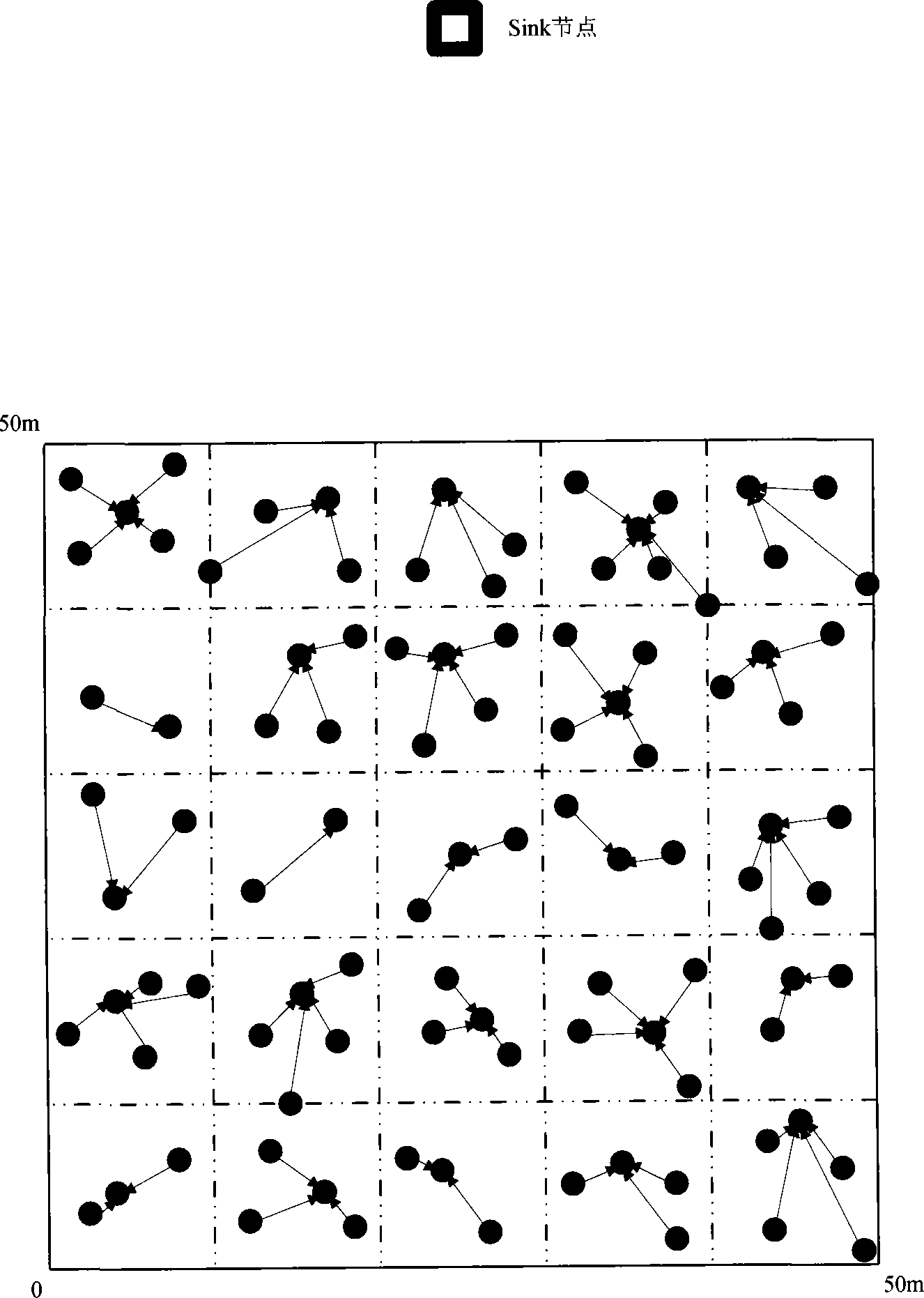Rapid data anastomosing algorithm used for wireless sensor network
A wireless sensor and fusion algorithm technology, applied in wireless network applications and wireless sensor network applications, can solve the problems of increasing data request failure rate, wasting communication bandwidth and energy, and wasting communication bandwidth, so as to reduce the amount of data transmission and reduce the Transmission delay, the effect of extending the life cycle
- Summary
- Abstract
- Description
- Claims
- Application Information
AI Technical Summary
Problems solved by technology
Method used
Image
Examples
Embodiment Construction
[0029] Firstly, the sensor network structure using CFDASC algorithm is given, figure 1 An example of the initial node distribution diagram is given. There are 100 nodes randomly distributed in a plane area of 50m×50m, and the sink node is located at 75m. figure 2 It is the case that the nodes in the cell are clustered. How to select the cluster head will be introduced later. image 3 It gives how the data is transmitted to the Sink node through the chain data fusion algorithm in the case of clustering determination. Step 1. Network initialization:
[0030] At this stage, virtual cells are formed, and each virtual cell has a label according to its location to facilitate data transmission. At the same time, nodes in each virtual cell (that is, in a cluster) must have a unique number in the cluster . Such as figure 1 As shown, each virtual cell can be represented by the form G ij mark, where the subscripts i and j represent the horizontal and vertical coordinates correspo...
PUM
 Login to View More
Login to View More Abstract
Description
Claims
Application Information
 Login to View More
Login to View More - R&D
- Intellectual Property
- Life Sciences
- Materials
- Tech Scout
- Unparalleled Data Quality
- Higher Quality Content
- 60% Fewer Hallucinations
Browse by: Latest US Patents, China's latest patents, Technical Efficacy Thesaurus, Application Domain, Technology Topic, Popular Technical Reports.
© 2025 PatSnap. All rights reserved.Legal|Privacy policy|Modern Slavery Act Transparency Statement|Sitemap|About US| Contact US: help@patsnap.com



